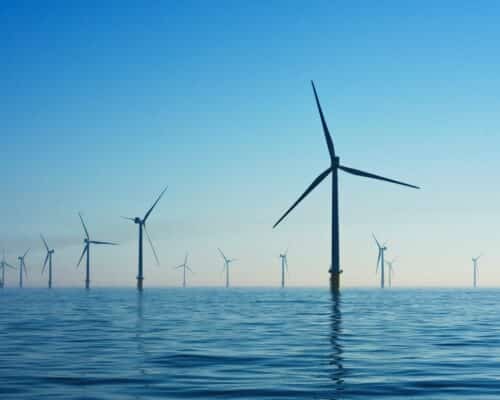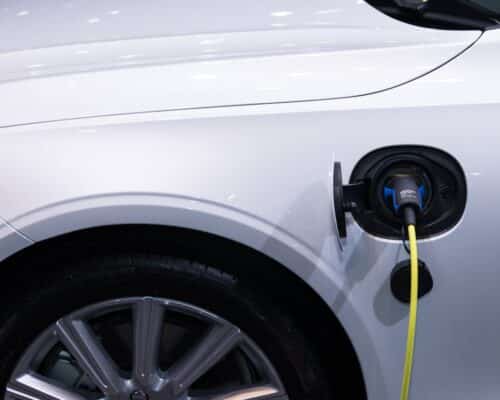How to Decarbonise Transport: A Challenging But Realistic Mission
10 July 2024 – by Viktor Tachev
The transport sector remains highly dependent on fossil fuels. Considering its scale, it is a crucial focus area for decarbonisation if the world is to align with a net-zero scenario by 2050. While road transport is increasingly moving in the right direction thanks to technologies like electric vehicles, batteries and charging infrastructure, challenges remain for air and maritime transportation. Policy support and continued investments prove crucial for overcoming them.
The Urgent Need For Transport Decarbonisation
As much as 95% of global transport energy still comes from fossil fuels. According to the IEA, transport sector emissions grew at an annual average rate of 1.7% between 1990 and 2022. This growth rate exceeded every other end-use sector and was on par with industry. As a result, today, transport accounts for over a third of CO2 emissions from end‐use sectors.
The United Nations finds that transport remains the largest source of energy-related emissions for around 45% of countries. For the rest, 55%, it is the second-largest. In high-income and developed countries, the transport sector’s share in total national GHG emissions can be as high as 30%. In comparison, across the least developed countries, it can be lower than 3%. Between 2000 and 2019, transport sector CO2 rose in all regions aside from Europe, where it fell 2%. Furthermore, the biggest growth in emissions was seen across developing countries in Asia.
According to the IEA, the global transport sector isn’t on track with its Net Zero Emissions by 2050 Scenario (NZE).
Decarbonising the Transport Sector Requires a Range of Different Solutions
The IEA estimates that to get on track with an NZE Scenario, the transport sector’s CO2 emissions must drop by more than 3% per year to 2030.
According to the IEA’s Net Zero Roadmap: A Global Pathway to Keep the 1.5 °C Goal in Reach, in a net-zero aligned world, 16% of the emission reductions will come from road transportation and 5% from aviation and shipping.
However, currently, there is no working, one-size-fits-all solution to succeed in this mission. Instead, the challenge calls for a comprehensive approach that addresses the specifics of the different sectors through tailored solutions.
Road Transportation
The IEA finds that the road segment accounts for around 70% of transport emissions. The majority comes from cars and buses. The rest comes from trucks carrying freight.
Fortunately, road transportation has the most affordable, commercially proven and readily deployable solutions. Furthermore, innovations continue at a record pace, including new and improved battery chemistries for more efficient performance, faster and cheaper charging infrastructure and more.
According to the IEA, an electric vehicle (EV) sold in 2023 will emit 50% less emissions than conventional alternatives over its lifetime. Environmental benefits aside, EVs are now also proving to be cheaper to operate than internal combustion engine (ICE) vehicles. From performance and cost efficiency standpoints, they also generally outperform hydrogen-powered alternatives. As a result, EVs are the best solution for decarbonising the road transportation sector in the short term.
As evident from the IEA’s ETP Clean Energy Technology Guide, currently, the most mature solutions for decarbonising the transport sector among the 87 tracked technologies are related to the electrification of road transportation.
In a net-zero-aligned scenario, the IEA estimates that electricity should represent 74% of energy consumption in road transport in 2050. By 2030 and 2035, the sales share of plug-in hybrid, battery and fuel-cell electric vehicles should be 70% and 98%, respectively.
To accommodate the growth in EV deployment, the IEA also calls for adequate investments in accompanying charging grid infrastructure.
Maritime and Aviation Sectors
The electrification of sea and air transportation faces significant technical challenges. It requires vastly different standards and infrastructure specifics from the road sector.
Panellists participating in the “Decarbonising the Transport Sector” session at the AtoZero Conference in Singapore in April, which Energy Tracker Asia was a media partner of, were clear that while electrification of maritime transportation can be theoretically possible at some point, it isn’t a viable short-term solution. The reason is the significant technology challenges that exist today. For example, the level of development in the efficiency of current battery technology will require either ensuring that a ship can charge its batteries halfway into its voyage, or use batteries of a very big and impractical size to be able to handle long-distance trips.
As a result, the industry is exploring alternative solutions for reducing the fuel requirements of ships and aircraft. According to the IEA, options for ships include wind propulsion and assistance, for which many designs can be retrofitted. For aircraft, entirely new airframe and engine designs can reduce fuel consumption by over 20%.
The agency notes that alternative fuels for powering ships and aircraft, such as hydrogen, ammonia and methanol, as well as technologies like hybrid electric aircraft, can also prove suitable. However, they mostly remain in the conceptual design and prototyping stages today. As evident from the ETP Clean Energy Technology Guide, while alternative fuel-based solutions are at advanced stages of development, challenges remain. For example, cost constraints and the urgency of slashing emissions can prove a mountain too high to climb for these concepts to turn into working solutions. Furthermore, the environmental, cost and scalability concerns surrounding them should be cleared out before they are capable of meeting the necessary demand levels.
Panellists participating in the “Decarbonising the Transport Sector” session at the AtoZero Conference argued that the widespread introduction of alternative fuels would likely have a significant economic impact on consumers. Regarding how costs would come into the equation, the experts stressed the importance of regulators understanding pricing mechanics for alternative fuel production and adopting policies to ease the burden on consumers.
However, according to the IEA’s The Role of E-fuels in Decarbonising Transport 2024 report, fuels obtained from electrolytic hydrogen could become viable solutions and scale up rapidly by 2030. At that point, e-fuels might be able to compete with fossil fuels in terms of pricing, with a minimal impact on consumer spending for airline or maritime transport.
In a net-zero-aligned scenario, the agency envisions the share of bioenergy, hydrogen and hydrogen-based fuels increasing to 2050.
However, for this to happen, the IEA stresses the need for achieving progress on several fronts. Among them are the massive expansion of cheaper renewable electricity, electrolyser cost reductions and significant investments in refuelling infrastructure and vessels. Energy efficiency improvements in shipping by 2030, behaviour-driven demand reduction in aviation by 2050 and regulatory intervention to stimulate demand for such fuels are also necessary.
Market Policies and Regulations Crucial For Decarbonising the Transport Sector
Introducing favourable regulations and policies is the single biggest enabler for accelerating the decarbonisation of the transport sector. For example, the IEA estimates that under the stated policies, the global EV fleet will grow twelvefold by 2035. As a result, it will reach 45 million in 2030 and close to 65 million in 2035, up from around 14 million in 2023.
Many governments are already making leaps in this direction. However, the growth will be disproportionate due to the different policies across markets.
China, Europe and the United States, the leading EV markets, all have ambitious targets and policies. The stated policies will increase electric car sales in 2030 to over 60%, which is close to the NZE requirement.
China remains the world’s leading producer of EVs and accompanying technologies. In 2022, it accounted for nearly 60% of global EV sales. Thanks to its favourable policies, the country has long been the only market where electric trucks have been deployed at scale. More importantly, the country is on course to reach a 50% new electric vehicle car share as soon as 2025.
The US has also established itself as a leader in transport sector decarbonisation through a series of measures intended to accelerate EV adoption and production of alternative fuels. The government also introduced robust emission pollution standards to help align the transport sector with the national 2050 net-zero goal.
The EU is among the best examples of strong policy support for decarbonising road, maritime and aviation transport. For example, the union has agreed to a law mandating the adoption of low-emission alternatives for maritime and aviation transport.
India is also actively working to support EV adoption and establish itself as a leader in battery and EV component manufacturing.
As a result of its massive hydrogen push, Japan nowadays holds the most patents globally. The country has also demonstrated leadership in developing hydrogen fuel cells and testing alternative fuels in marine transportation.
Progress in the Years Up to 2030 Crucial
The IEA notes that the number of global fuel economy and vehicle efficiency policies is increasing rapidly. Standard tools like demand-side subsidies and supply-side mandates, as well as novel mechanisms, like incentives for an accelerated technological scale-up, advancement diversification and strengthening of EV battery value chains, have all proved instrumental in the progress to date.
However, more work must be done since the global transportation sector isn’t on track for a net-zero scenario. In the road segment, additional efforts are required to decarbonise battery manufacturing and improve the processing of critical minerals. Furthermore, the increased momentum in EV sales remains concentrated in China and several developed markets. Developing and emerging countries, especially in Southeast Asia, need more ambitious policy interventions to advance their transport sector decarbonisation.
In addition, while governments are increasingly working towards easing car electrification, efforts to reduce maritime, air and road freight emissions are lagging.
Yet, the progress made over the past decade is a positive sign that decarbonising the transport sector is no longer a pipe dream but a realistic mission if backed with adequate policy support.
by Viktor Tachev
Viktor has years of experience in financial markets and energy finance, working as a marketing consultant and content creator for leading institutions, NGOs, and tech startups. He is a regular contributor to knowledge hubs and magazines, tackling the latest trends in sustainability and green energy.
Read more







